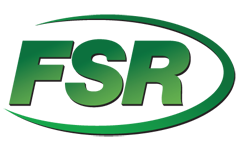
ELA teachers face the enormous challenge of growing young writers within an extremely tight time frame—just one school year. Like the writing process itself, teaching writing is messy, non-linear, and time-consuming. Both novice and experienced teachers, though well-intentioned, often remain superficial in their writing instruction methods given the constraints of curriculum and other systemic factors. Inadequate time to provide feedback is most often cited as the culprit. Additionally, many ELA teachers find assessing writing continuously challenging.
Over the years, technology in the classroom has evolved to better support ELA teachers in developing their students’ writing abilities. Students today are certainly better equipped with digital tools, sites, and apps that assist with their writing needs. Despite this, many ELA classrooms today are still not tapping into the potential of technology to enrich writing instruction and embed teacher feedback seamlessly into the process.
So, how can ELA teachers leverage technology to more effectively grow writers?
Above all else, stay rooted in pedagogy and best instructional practices. Avoid using technology just for the sake of using technology. NCTE believes that “New technologies should be considered only when it is clear how they can enhance, expand, and/or deepen engaging and sound practices related to literacies instruction.” Design the lesson around the literacy goal and then choose the technology tool to further engage students.
Consider how tech tools can support the writing process. There’s assigning writing and then there’s teaching writing. Teaching writing requires heavy modeling and guiding students through all steps of the writing process: brainstorming, drafting, revising, editing, and publishing—and not necessarily in that order.
Utilizing technology during the brainstorming phase can excite students, building energy to transfer into drafting. During a personal essay brainstorm, teachers may ask students to curate a collage of pictures on Padlet of people and places of significance to them. When generating ideas for a research presentation, students can record a 30-second pitch on Flipgrid. Classmates and the teacher can comment on the ideas and spark some momentum for the writer.
Drafting in Google Docs allows students to share assignments with the teacher for quick formative checks and feedback. Additionally, they can share drafts with their peers during various points in the process. With teacher guidance, they can collaborate to improve their pieces, inching it toward the finish line with more autonomy.
Revision history in Google Docs serves as a powerful tool in making growth visible to students and the teacher. During a writing conference, a teacher may restore previous versions of the draft in an effort to focus on how the writing has evolved as a result of certain acquisition lessons. For instance, the student writer can more clearly see how active, unusual verbs invigorated the essay. As a bonus, it instills a growth mindset and creates a classroom culture where resilience and hard work is valued.
Personalize writing instruction with recording technology. After a rough draft is due, teachers can harness recording tools to streamline feedback, ultimately saving time and personalizing the learning. Mote, a Chrome extension, allows teachers to quickly record audio feedback right within Google Docs. Teachers may also opt to use screen recording technology like Screencastify or Loom where they’re able to point to specific problem paragraphs or model rewriting a sentence or two. Undoubtedly, these tools have changed the feedback game.
Technology enables ELA teachers to work smarter, not harder. Most veteran ELA teachers have accepted the long hours of grading required of the job. Though, with the help of novice teachers entering the field, many are beginning to grasp how technology can quicken their pace while benefiting students.
The most valuable feedback for developing writers comes during the brainstorming and drafting phases of writing, not at the end. By then, it’s too late. Students who receive snippets of feedback along the way are much more likely to engage in producing high-quality work. An encouraging comment on a brainstorm Padlet, a link to a website on semicolon use, or a 2-minute screencast that asks some focused questions can all enrich a student’s writing experience.
Gradually as teachers gain experience through the years, they can craft and store these comments and resources to use for future classes. Standards-based rubric generators like ThemeSpark are a great place to build language for comment banks.
Along the way, students will begin to see the value of continually revisiting their writing, tweaking, utilizing sources provided by the instructor, and tweaking some more. The classroom culture embraces the messy process that yields the best results—writing that students are proud to share.
Publishing with technology empowers young writers. The beauty of a connected world is that it creates endless outlets for students to share their work. No longer are the days where students solely write for their teacher. Whether it be posting a poem on their social media feed or sharing a link on Google Classroom for a cross-class virtual gallery walk, authentic audiences for their hard work inherently expand.
Encouraging students to publish their work with the wider world increases their confidence and motivation to write even more. Sites like Write the World provide students a community of young writers seeking feedback from both peers and expert creative writers. It honors that writing is social and that inspiration can stem from collaboration.
A litany of middle and high school online literary magazines like TeenInk or Polyphony Lit offer similar outlets to encourage the next generation of writers. Overall, providing these publishing outlets for students to share their work ups the stakes and reminds students of authentic purposes for writing beyond simply earning a grade.
The world has a shortage of dynamic and creative writers across all fields. It’s imperative that ELA teachers today prepare students for the rigorous writing challenges that they’ll certainly face in college and the workplace. Fortunately, technology can greatly enhance writing instruction in the ELA classroom and afford teachers more time to provide feedback and personalize learning.
